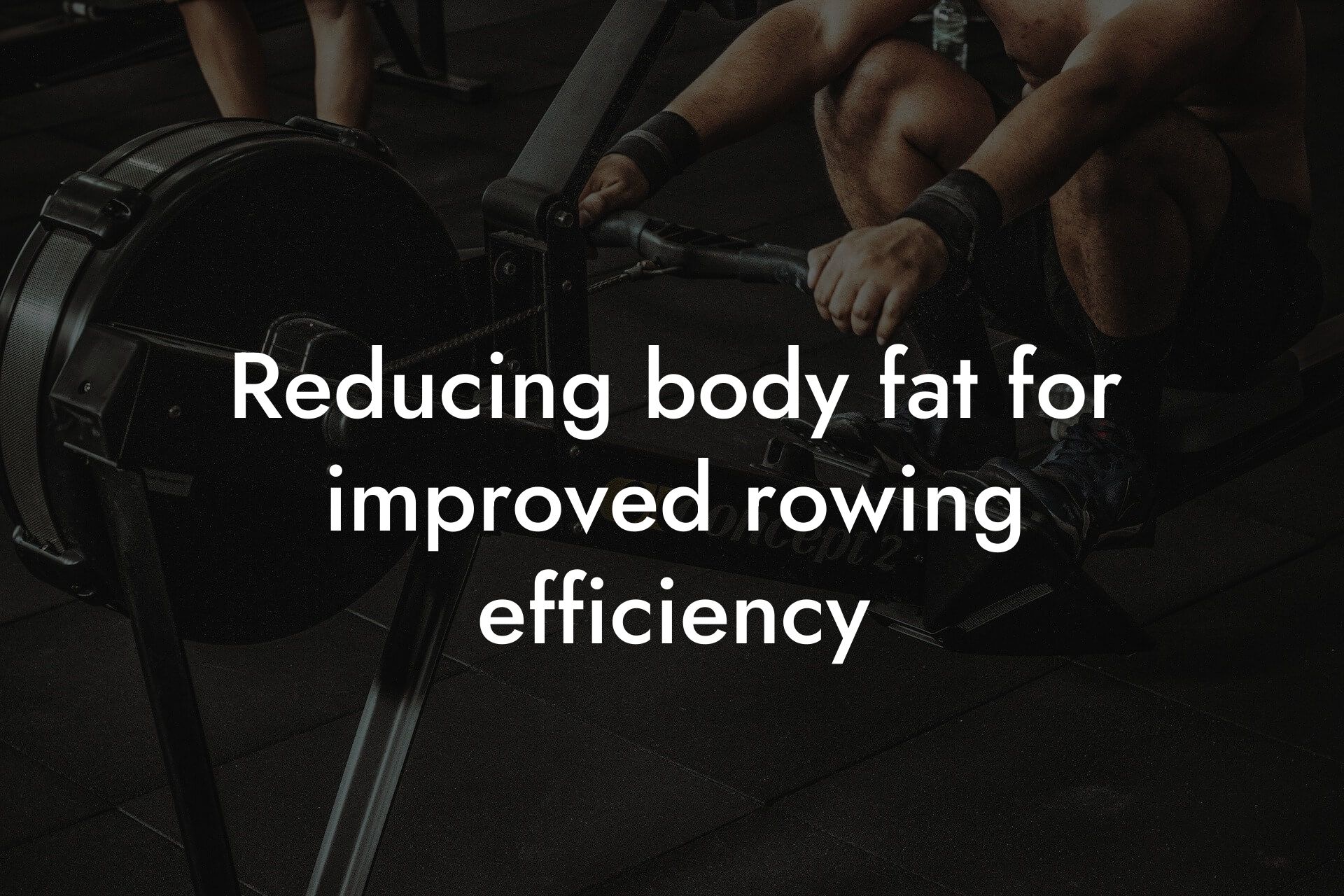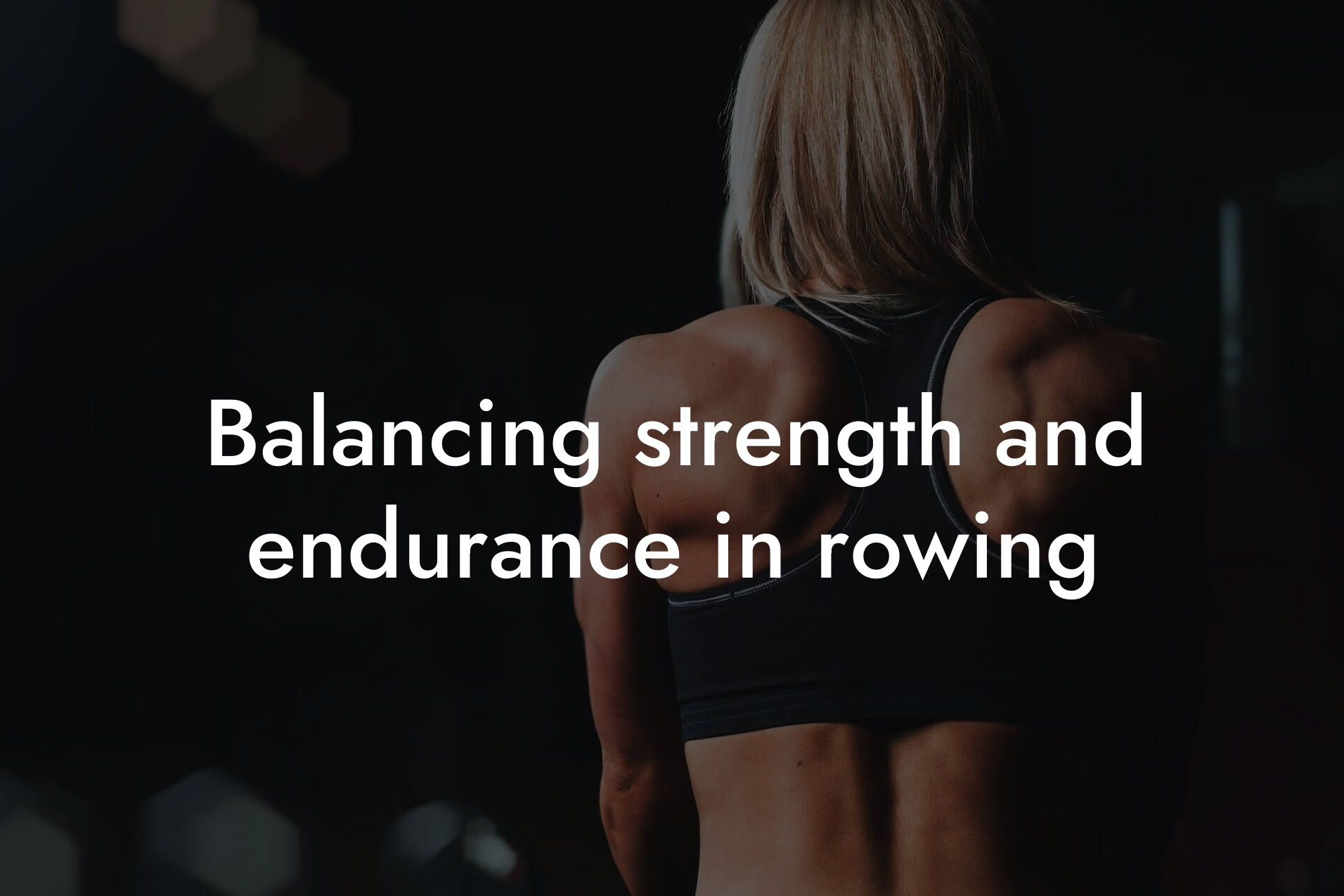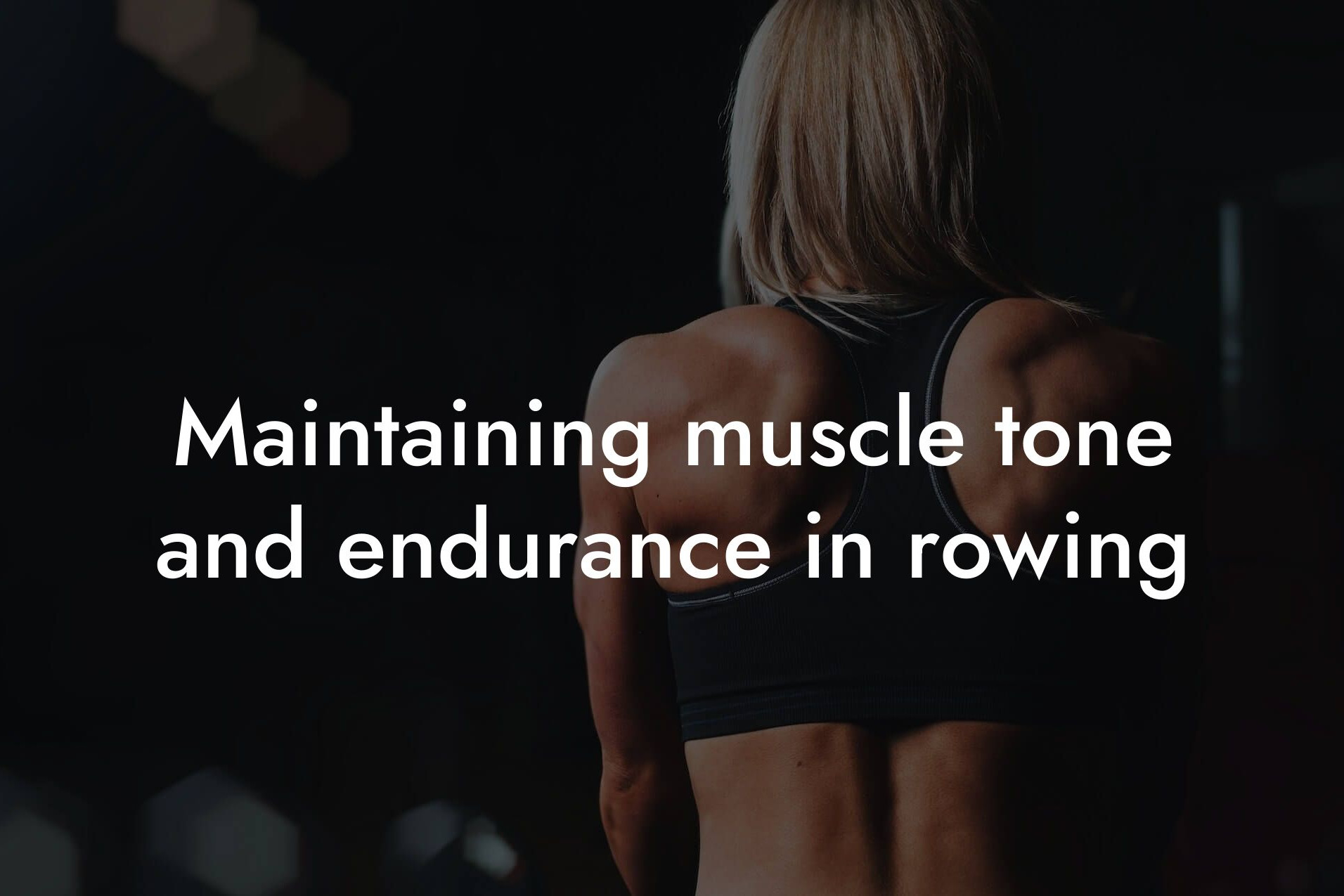Rowing is a fantastic exercise that offers numerous benefits for cardiovascular health. As a high-earning professional, taking care of your physical appearance and overall well-being is crucial for success in both your personal and professional life. At Tano Performance Group, we understand the importance of maintaining a healthy physique, body fat percentage, and bone density. In this article, we will delve into the role of rowing in cardiovascular health, exploring its benefits, how it compares to other exercises, and tips for incorporating rowing into your fitness routine.
Table of Contents
What is Cardiovascular Health?
Cardiovascular health refers to the overall health of the heart, blood vessels, and circulatory system. Maintaining good cardiovascular health is essential for preventing diseases such as heart disease, stroke, and high blood pressure. Regular exercise, a balanced diet, and a healthy lifestyle are all crucial factors in maintaining cardiovascular health.
Benefits of Rowing for Cardiovascular Health
Rowing is an excellent exercise for cardiovascular health due to its ability to engage the entire body, improving cardiovascular function, and increasing overall fitness. Some of the key benefits of rowing for cardiovascular health include:
• Improved cardiovascular function: Rowing is an aerobic exercise that strengthens the heart and lungs, improving cardiovascular function and increasing oxygen supply to the muscles.
• Increased endurance: Rowing exercises the entire body, improving muscular endurance and increasing stamina.
• Enhanced circulation: Rowing helps to improve blood flow and circulation, reducing the risk of cardiovascular disease.
• Weight management: Rowing is a calorie-intensive exercise that can help with weight management and reduce the risk of obesity-related cardiovascular diseases.
How Rowing Compares to Other Exercises
Rowing is often compared to other exercises such as running, cycling, and swimming. While these exercises are also beneficial for cardiovascular health, rowing has some unique advantages. Rowing is a low-impact exercise, making it easier on the joints compared to high-impact exercises like running. Additionally, rowing engages the entire body, providing a full-body workout that is unmatched by many other exercises.
The Science Behind Rowing and Cardiovascular Health
Studies have consistently shown that rowing has a positive impact on cardiovascular health. One study published in the Journal of Sports Science and Medicine found that rowing exercise improved cardiovascular function in healthy adults. Another study published in the European Journal of Applied Physiology found that rowing exercise reduced blood pressure and improved cardiovascular risk factors in individuals with hypertension.
Getting Started with Rowing
If you're new to rowing, getting started can seem intimidating. However, with a few simple steps, you can begin incorporating rowing into your fitness routine. Here are some tips to get you started:
• Find a rowing machine: Look for a rowing machine at your local gym or consider investing in a home rowing machine.
• Learn proper form: Proper form is essential for getting the most out of your rowing workout and reducing the risk of injury. Consider working with a personal trainer or taking a rowing class to learn proper form.
• Start slow: Begin with short, low-intensity rowing sessions and gradually increase duration and intensity as you become more comfortable with the exercise.
Rowing for Weight Loss
Rowing is an excellent exercise for weight loss due to its high caloric expenditure. Rowing exercises the entire body, engaging the legs, core, and arms, making it an effective way to burn calories and shed pounds. Additionally, rowing can help increase muscle mass, which can further boost metabolism and support weight loss.
Rowing for Bone Density
Rowing is also beneficial for bone density, particularly in older adults. Rowing exercises the entire body, including the bones, which can help improve bone density and reduce the risk of osteoporosis. This is especially important for high-earning professionals who may have a higher risk of osteoporosis due to a sedentary lifestyle.
In conclusion, rowing is an excellent exercise for cardiovascular health, offering numerous benefits for the heart, blood vessels, and circulatory system. By incorporating rowing into your fitness routine, you can improve cardiovascular function, increase endurance, and reduce the risk of cardiovascular disease. At Tano Performance Group, we understand the importance of maintaining a healthy physique, body fat percentage, and bone density. By using our DEXA machine, you can get a complete body assessment and take the first step towards achieving your fitness goals. So why not give rowing a try? Your body – and your business – will thank you.
Frequently Asked Questions
What is the primary benefit of rowing for cardiovascular health?
Rowing is an excellent cardiovascular exercise that offers numerous benefits, but its primary advantage is its ability to improve heart health by strengthening the heart and increasing blood flow. Regular rowing exercises can help lower blood pressure, reduce the risk of heart disease, and improve overall cardiovascular function.
How does rowing compare to other forms of cardio exercises?
Rowing is a low-impact, full-body exercise that provides an effective cardiovascular workout while being gentle on the joints. Compared to high-impact activities like running or jumping, rowing is a safer option for those with joint issues or chronic pain. Additionally, rowing exercises engage multiple muscle groups simultaneously, making it a more efficient and effective way to improve cardiovascular health.
What are the key muscle groups worked during rowing?
Rowing is a compound exercise that engages multiple muscle groups, including the latissimus dorsi, rhomboids, trapezius, biceps, shoulders, core, legs, and glutes. This comprehensive engagement helps improve overall muscle strength, endurance, and coordination.
Can rowing help with weight loss?
Absolutely! Rowing is an excellent calorie-burner, making it an effective way to aid in weight loss. Depending on intensity and duration, rowing can burn between 400-800 calories per hour, making it an excellent addition to any weight loss program.
How often should I row to see cardiovascular benefits?
To experience significant cardiovascular benefits, it's recommended to row at least 3-4 times per week, with a minimum of 20-30 minutes per session. However, even rowing just 1-2 times per week can still provide some benefits. Consistency and frequency are key to achieving optimal results.
What is the best type of rowing machine for cardiovascular exercise?
There are several types of rowing machines available, including air, water, and magnetic resistance models. For cardiovascular exercise, an air resistance rowing machine is often the most effective, as it provides a smooth, consistent motion that simulates the feeling of rowing on water.
Can rowing help improve my posture?
Yes, rowing can help improve your posture by strengthening the muscles in your back, shoulders, and core. Good posture is essential for efficient rowing, and regular rowing exercises can help develop the necessary muscle strength and endurance to maintain proper posture.
How does rowing affect bone density?
Rowing is a weight-bearing exercise that can help improve bone density, particularly in the hips, legs, and spine. This is especially important for individuals at risk of osteoporosis or those who have already been diagnosed with the condition.
Can rowing help reduce stress and anxiety?
Absolutely! Rowing is a meditative exercise that can help reduce stress and anxiety by releasing endorphins, also known as "feel-good" hormones. The repetitive motion of rowing can be calming and soothing, making it an excellent way to unwind and relax.
What are the benefits of rowing for seniors?
Rowing is an excellent exercise for seniors, as it's low-impact and can be modified to accommodate physical limitations. Rowing can help improve cardiovascular health, increase mobility, and reduce the risk of chronic diseases, such as heart disease and diabetes.
Can rowing be adapted for individuals with disabilities?
Yes, rowing can be adapted for individuals with disabilities. Adaptive rowing programs and equipment are available to accommodate a range of physical abilities, making it possible for individuals with disabilities to experience the benefits of rowing.
How does rowing compare to cycling for cardiovascular exercise?
Both rowing and cycling are excellent cardiovascular exercises, but they engage different muscle groups and provide distinct benefits. Rowing is a full-body exercise that engages the upper body, core, and legs, while cycling primarily focuses on the legs. Rowing may be more effective for improving overall cardiovascular health, while cycling may be better suited for building leg strength and endurance.
Can rowing help improve my running performance?
Yes, rowing can help improve your running performance by increasing cardiovascular endurance, building leg strength, and enhancing overall muscular endurance. Additionally, rowing can help reduce the risk of running-related injuries by strengthening the muscles and connective tissues in the legs.
What is the best way to incorporate rowing into my existing workout routine?
The best way to incorporate rowing into your existing workout routine is to start with 1-2 times per week and gradually increase frequency and duration as you become more comfortable with the exercise. You can also incorporate rowing into your warm-up or cool-down routine, or use it as a standalone cardio exercise.
Can rowing help improve my overall athletic performance?
Absolutely! Rowing is a versatile exercise that can improve cardiovascular endurance, increase muscular strength and endurance, and enhance overall athletic performance. Rowing can be beneficial for athletes participating in a variety of sports, including football, basketball, soccer, and more.
How does rowing affect my metabolism?
Rowing can help boost your metabolism by increasing muscle mass, improving cardiovascular health, and enhancing overall physical fitness. This can lead to increased caloric burn, even at rest, making it easier to maintain weight loss or achieve weight loss goals.
Can rowing help improve my body composition?
Yes, rowing can help improve your body composition by increasing muscle mass, reducing body fat, and enhancing overall physical fitness. Regular rowing exercises can help you achieve a leaner, more toned physique.
What are the benefits of rowing for women's health?
Rowing is an excellent exercise for women's health, as it can help improve cardiovascular health, increase bone density, and reduce the risk of chronic diseases, such as heart disease and osteoporosis. Additionally, rowing can help improve body composition, reduce stress and anxiety, and enhance overall physical fitness.
Can rowing help improve my mental health?
Absolutely! Rowing can help improve mental health by reducing stress and anxiety, releasing endorphins, and providing a sense of accomplishment and self-confidence. The repetitive motion of rowing can be meditative, making it an excellent way to clear your mind and relax.
How does rowing compare to swimming for cardiovascular exercise?
Both rowing and swimming are excellent cardiovascular exercises, but they engage different muscle groups and provide distinct benefits. Rowing is a full-body exercise that engages the upper body, core, and legs, while swimming primarily focuses on the upper body and legs. Rowing may be more effective for improving overall cardiovascular health, while swimming may be better suited for building endurance and stamina.
Can rowing help improve my flexibility and mobility?
Yes, rowing can help improve flexibility and mobility by increasing range of motion, reducing stiffness, and enhancing overall joint health. Regular rowing exercises can help improve flexibility in the shoulders, hips, and knees, making it an excellent exercise for individuals with mobility limitations.
What are the benefits of rowing for athletes in recovery?
Rowing is an excellent exercise for athletes in recovery, as it's low-impact and can be modified to accommodate physical limitations. Rowing can help improve cardiovascular health, increase strength and endurance, and reduce the risk of re-injury, making it an ideal exercise for athletes returning from injury or surgery.
Here are some related articles you might love...
- Reducing body fat for improved rowing efficiency
- Balancing strength and endurance in rowing
- Maintaining muscle tone and endurance in rowing
- Recovery techniques for rowers after intense sessions
- How body composition impacts rowing performance
- Strength training tips to complement your rowing routine
- Using DEXA scans to monitor progress in rowing
- Bone density and its role in rowing performance
- Nutrition strategies for sustained energy during rowing workouts
Zak Faulkner
Zak Faulkner is a leading authority in the realm of physical health and body composition analysis, with over 15 years of experience helping professionals optimise their fitness and well-being. As one the experts behind Tano Performance Group, Zak has dedicated his career to providing in-depth, science-backed insights that empower clients to elevate their physical performance and overall health.
With extensive knowledge of DEXA technology, Zak specializes in delivering comprehensive body assessments that offer precise data on body fat, muscle mass, bone density, and overall physique. His expertise enables individuals to make informed decisions and achieve their fitness goals with accuracy and confidence. Zak’s approach is rooted in a deep understanding of human physiology, combined with a passion for helping clients unlock their full potential through personalised strategies.
Over the years, Zak has earned a reputation for his commitment to excellence, precision, and client-focused service. His guidance is trusted by top professionals who demand the best when it comes to their health. Whether advising on fitness programs, nutritional strategies, or long-term wellness plans, Zak Faulkner’s insights are a valuable resource for anyone serious about taking their health and fitness to the next level.
At Tano Performance Group, Zak continues to lead our Content Team revolutionising how professionals approach their physical health, offering unparalleled expertise that drives real results.




